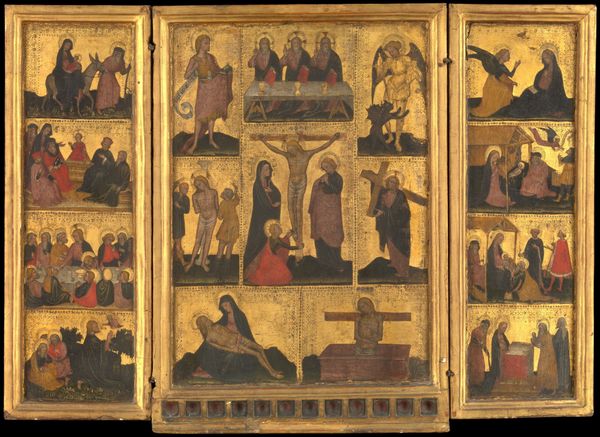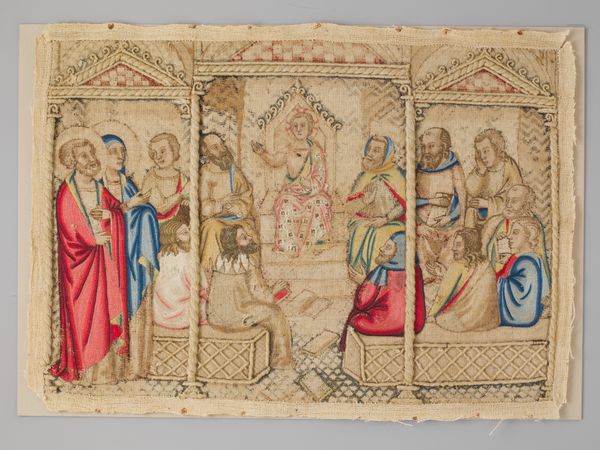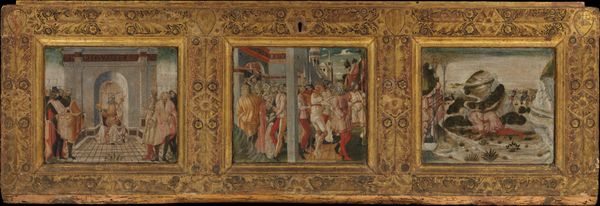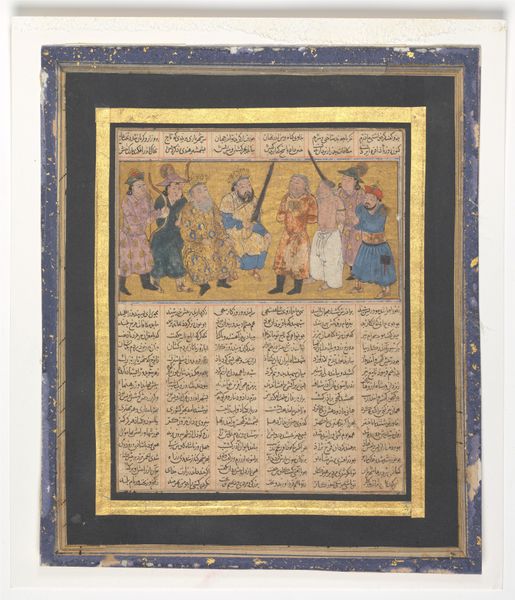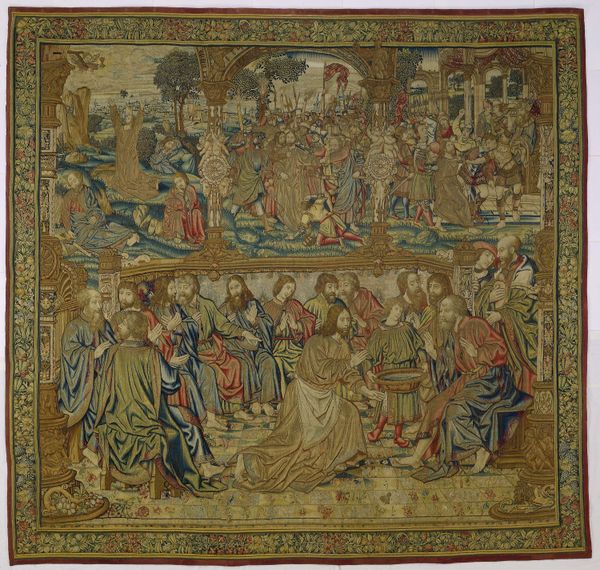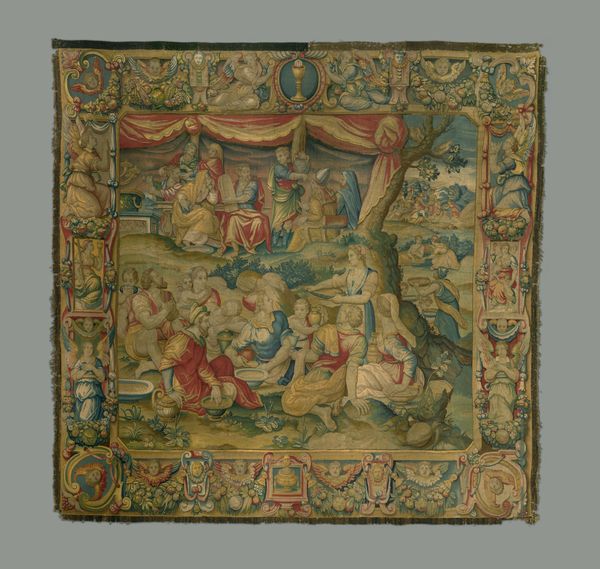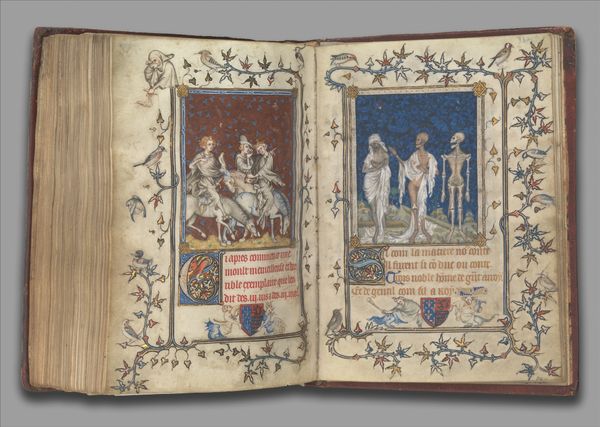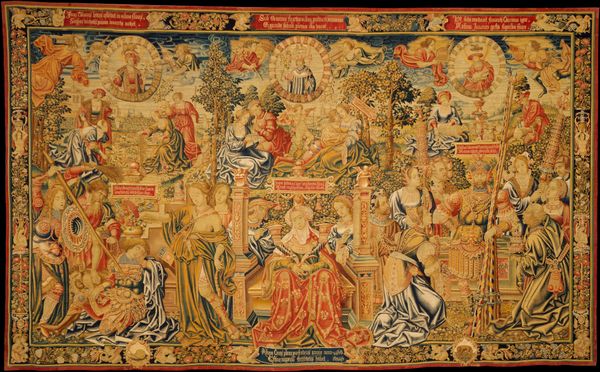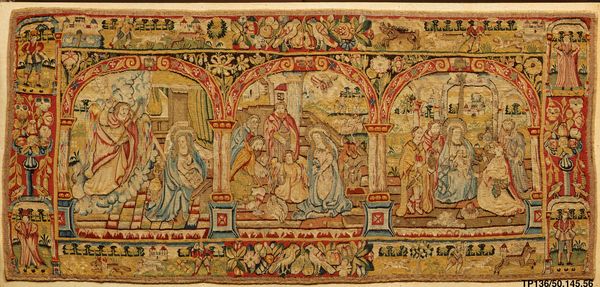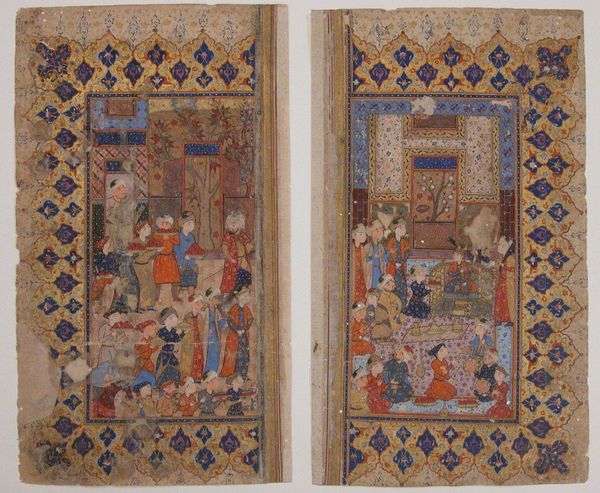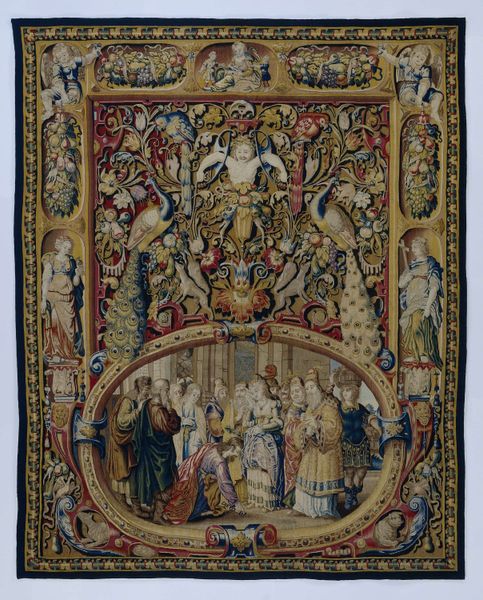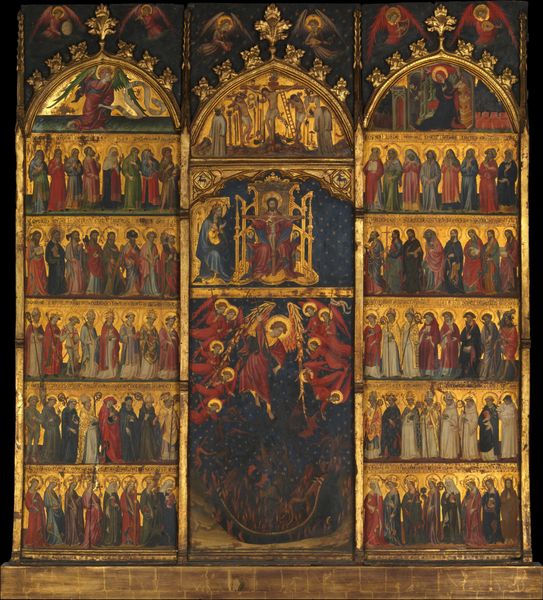
Altarpiece (retablo) with Scenes from the Passion 1450 - 1499
0:00
0:00
panel, tempera, painting
#
medieval
#
panel
#
narrative-art
#
tempera
#
painting
#
gothic
#
figuration
#
history-painting
#
international-gothic
#
christ
Dimensions: Overall: 56 x 120 3/4 x 3 in., 178lb. (142.2 x 306.7 x 7.6 cm, 80740.3g)
Copyright: Public Domain
Editor: Here we have what’s described as an altarpiece from the late 15th century, “Altarpiece (retablo) with Scenes from the Passion,” attributed to Master Morata. It's painted with tempera on panel and currently resides in the Metropolitan Museum. All these figures crammed together almost overwhelm you, especially given its age. As a piece made for display in a church, how did the altarpiece's function affect its creation and its reception? Curator: A crucial question! We must understand how the religious and social context dictated both production and viewing. These retablos were didactic tools, meant to instruct a largely illiterate populace about biblical narratives, as much as they were objects of devotion. The sheer density of figures isn’t just stylistic, but functional, emphasizing the importance of community and witness in religious experience. Editor: That makes a lot of sense. I hadn’t thought about it in terms of mass communication, although this sounds... cynical, almost? Curator: Not at all. The patronage system influenced the artist's choices, of course. Master Morata needed to convey messages the Church wanted broadcast. What might the selection of scenes from Christ's Passion reveal about contemporary values and concerns? Notice how certain details of Christ's suffering are amplified; the scourging, for instance. Editor: The level of visible suffering does jump out now that you point it out. Was this playing to anxieties that the church hoped to exploit? Curator: Precisely! Fear of divine retribution, and thus an urge to identify with and partake of the savior’s ordeal, were powerful social forces at this time. Furthermore, think of the physical placement: elevated, gilded, and imposing in a sacred space. The politics of display alone contribute volumes to meaning. Editor: So much to consider that I completely overlooked! I focused on it as solely an artistic statement. Curator: As did most of us, when starting! Art lives inside these dialogues and systems. Recognizing the interplay shapes how we see – and understand - art's role even today.
Comments
No comments
Be the first to comment and join the conversation on the ultimate creative platform.
